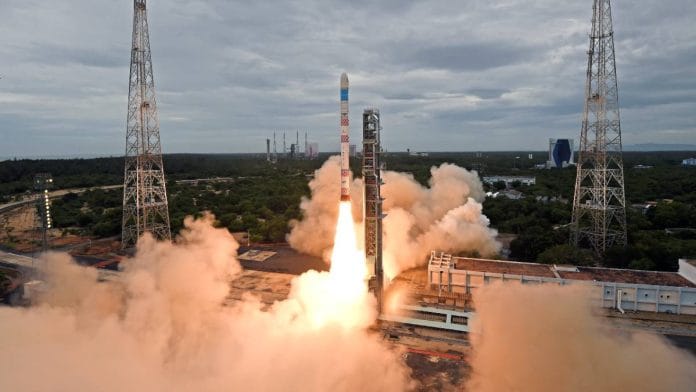In the Union Budget 2024-25 speech, Finance Minister Nirmala Sitharaman announced the inception of a Rs 1000 crore venture capital fund, emphasising the government’s continued commitment to achieving a five-fold expansion of the space economy in the next decade.
The need for high capital investments is a challenge for space startups, and the government realises this. For instance, in February, the government liberalised the FDI policy for the space sector.
However, space companies around the world typically depend on government investments and will continue to do so in the coming years, given the dual-use nature of space-based services.
Government as investor
There are different ways that government investments happen in the space sector. They can occur as equity investments, where the government acquires minority stakes in early-stage space companies to support them. Here, the government is taking the responsibility for using public funds to pump capital into the space sector. This is what the venture capital fund is attempting to do. While this is a good approach, it has a few drawbacks.
The space sector is highly capital-intensive, and the Rs 1,000 crore proposed by the government is insufficient to satisfy the funding needs of space startups. There may be companies that need funds but do not want to divulge their minority stakes to the government. Through a venture capital fund, the government is betting on ideas rather than outcomes.
However, there is another way for the government to invest in the space sector that incentivises outcomes—by purchasing services through contracts, that is, acting as an anchor customer.
Also read: Budget 2024: Venture capital fund of Rs 1,000 crore to be set up to boost space economy
Government as customer
In India, the government has a huge potential to buy useful space-based services from space companies to spur development. Areas like mining, water management, land use monitoring, wildlife conservation, weather forecasting, urban planning, agriculture, and food security can tremendously benefit from the information provided by space-based technologies.
In fact, the government has already begun doing this. The Indian National Space Promotion and Authorization Center (IN-SPACe) has invited the private sector to set up Earth Observation systems under the public-private partnership (PPP) model. The government would be better served by using the Rs 1,000 crore fund to enable the purchase of more such services from the private space sector in India.
Having the government as an anchor customer provides a stable source of demand for space-based services, reducing uncertainties in the market. It will boost the industry and increase investor confidence in the Indian space sector, which can draw in more investments from home and abroad. It will also induce healthy competition among companies, enabling only the best to win government contracts. Finally, such an approach incentivises innovation, efficiency, and overall success among Indian space startups.
Also read: Global space economy to be worth $1.8 trillion by 2035, shows World Economic Forum report
Examples to learn from
The US government also supports its space companies primarily through this method rather than direct investments. NASA’s Commercial Orbital Transportation Services (COTS) programme is an excellent example of how this government procurement model yields favourable outcomes for all stakeholders. In 2004, the US government announced that its space shuttles would be retired due to high costs and safety concerns. The COTS programme was started in 2006 to replace the space shuttles.
Under the COTS programme, companies had to achieve certain milestones to avail payments, ensuring the funds were linked to performance and progress. The risk was shared between the companies and the government, rather than the government bearing all the risk with upfront investments.
The programme was a success. SpaceX’s Falcon 9 rocket and Orbital Sciences Corporation’s Cygnus spacecraft were developed under COTS. SpaceX completed a cargo delivery demonstration in 2012, restoring the American ability to resupply the International Space Station (ISS). COTS achieved its objectives and created a competitive private space sector. The successes and lessons learned through the programme laid the groundwork for future NASA projects.
The space sector in India holds tremendous potential for creating and scaling up industries that cater to the demand for space-based services in the country. This demand has to come from the government first. The government’s initial role has to be one of a customer. It will pave the path for a flourishing space ecosystem that can compete with the best in the world, spur economic growth, create jobs, and add to Indian strategic capabilities.
The author is a research analyst at the Takshashila Institution. Views are personal.
(Edited by Aamaan Alam Khan)






